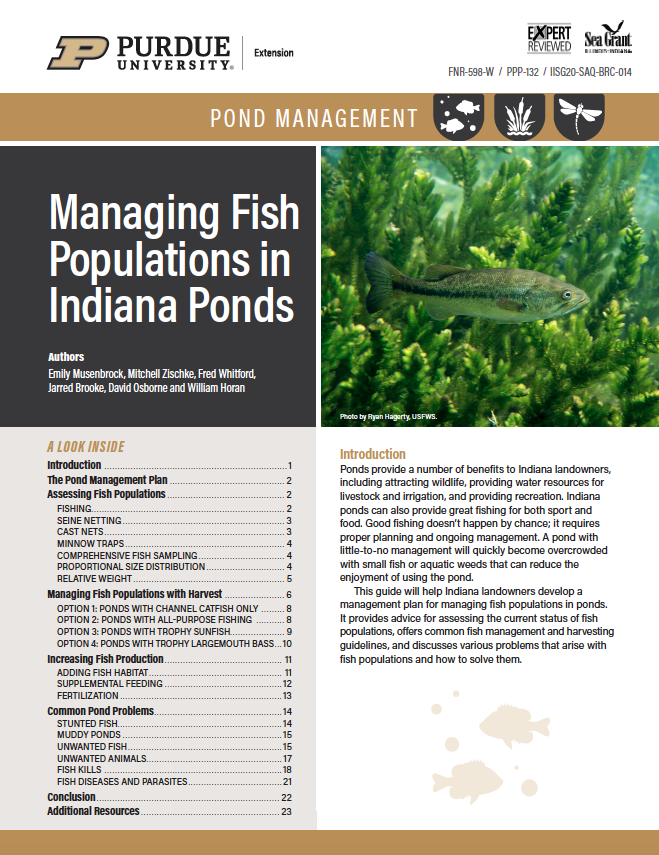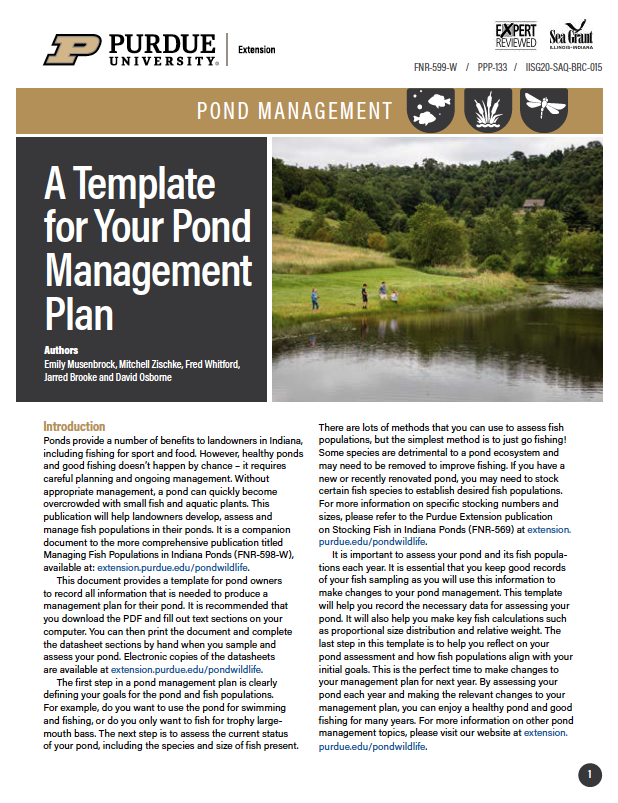Fish Population Management
Overview
Healthy fish populations and good fishing doesn't happen by chance - it requires careful planning and effective management. This section will provide a comprehensive overview of topics relating to fish population management, including:
- Developing a pond management plan
- Fish assessment and species identification
- Fish stocking
- Fish harvest
- Fish kills
Pond Management Plan
Healthy ponds and good fishing don’t happen by chance - they require careful planning and management. A good first step in this process is to develop a pond management plan. A management plan can help you determine your specific goals for the pond and fish populations, and provide a road-map for how to achieve these goals. A pond management plan is a "living document" and should be constantly updated and revised as your goals change, and as your pond ecosystem and fish populations change.
For more information on developing a pond management plan, including assessing your pond for the first time, please refer to Purdue Extension Publication FNR-598-W. For a template to help get you started on your own management plan, please download Purdue Extension Publication FNR-599-W.
Fish assessment
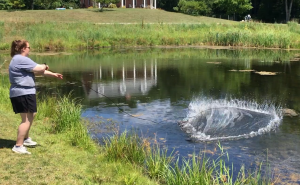 If you have an existing pond on your property, the next step after setting pond management goals is to assess the current status of the pond. This will give you a starting point for pond management decisions as well as a baseline to evaluate future changes. Without knowing what fish and plants are in the pond, it is impossible to plan for the future. It is also important to conduct routine assessments of fish populations so that you can determine if your management is yielding the desired results, or to identify problems before they get out of control. Detailed information on pond assessment can be found in FNR-598-W.
If you have an existing pond on your property, the next step after setting pond management goals is to assess the current status of the pond. This will give you a starting point for pond management decisions as well as a baseline to evaluate future changes. Without knowing what fish and plants are in the pond, it is impossible to plan for the future. It is also important to conduct routine assessments of fish populations so that you can determine if your management is yielding the desired results, or to identify problems before they get out of control. Detailed information on pond assessment can be found in FNR-598-W.
Fish assessment can be as simple or comprehensive as you’d like. Simple fish assessment can be done by going fishing and recording the species and size of each fish caught. It is important to use fishing methods that are likely to capture a wide range of species and sizes (e.g. bobber fishing with nightcrawlers, fishing with soft plastic and other lures). It is essential that you record accurate data on the fish that you catch, and that you keep these records for a number of years. You can then review your fishing records to determine specific fish management, harvest and stocking requirements. You can find tables to record your fish data in FNR-599-W.
Other fish sampling methods, such as netting and electrofishing, can be done to get a more comprehensive idea of the fish community in your pond. It’s best to work with fish biologists, such as Purdue Extension Educators or private consultants, to conduct these comprehensive fish assessments.
Fish species identification
 There are hundreds of fish species that live in streams and lakes in Indiana, and many of these can show up in ponds. However, there are relatively few fish species that are well-suited to Indiana ponds. Many fish species can cause problems with overpopulation or habitat degradation. Therefore, it is important to know what fish are in your pond.
There are hundreds of fish species that live in streams and lakes in Indiana, and many of these can show up in ponds. However, there are relatively few fish species that are well-suited to Indiana ponds. Many fish species can cause problems with overpopulation or habitat degradation. Therefore, it is important to know what fish are in your pond.
Our fish species identification guide will help you identify the 30 most common fish species found in Indiana ponds. The guide will also highlight which species are best suited to ponds and which species should be avoided or eradicated. For help with Indiana pond fish species identification, please refer to Purdue Extension Publication FNR-584.
Fish stocking
 Fish stocking is typically only required for new or renovated ponds, or ponds that have undergone a significant fish kill. Many other fish problems, such as stunted fish populations, are actually made worse through fish stocking and are best addressed through harvest or other fish management.
Fish stocking is typically only required for new or renovated ponds, or ponds that have undergone a significant fish kill. Many other fish problems, such as stunted fish populations, are actually made worse through fish stocking and are best addressed through harvest or other fish management.
Fish stocking is a lot like planning for retirement – you need to have a vision of your ultimate goal. It is important that you start off on the right foot so that you can reap the rewards down the track. Stocking the wrong species or the wrong balance of fish often results in many problems that are difficult to rectify later.
Four fish species are recommended for stocking in Indiana Ponds: bluegill, redear sunfish, largemouth bass and channel catfish. These species can yield balanced fish populations that provide good fishing opportunities and food for the table. Bluegill and redear are important prey for bass, while bass are important predators of these sunfishes. This predator-prey relationship is what maintains balance in pond fish populations. Therefore, it is essential to stock these species at the correct sizes and ratio to start off on the right foot. Channel catfish do not significantly contribute to this predator-prey relationship in ponds and can be stocked in combination with these species or on their own.
Grass carp and tilapia are two species that can be stocked in ponds to help control aquatic vegetation. Grass carp only eat pondweeds and do not eat filamentous algae, duckweed or cattails. Tilapia prefer to eat filamentous algae, although they may also consume some pondweeds. It is recommended that you work with a pond consultant of fish biologist if wishing to stock these species.
Fish should always be sourced from a licensed fish hatchery. This will ensure that 1) you get the correct species for your pond, 2) you get high-quality and healthy fish, and 3) you don’t introduce disease or parasites into your pond. While it may seem tempting to collect your own fish from other ponds, lakes or streams, this may cause significant problems for your pond down-the-track.
For more information on stocking fish in Indiana ponds, please refer to Purdue Extension Publication FNR-569.
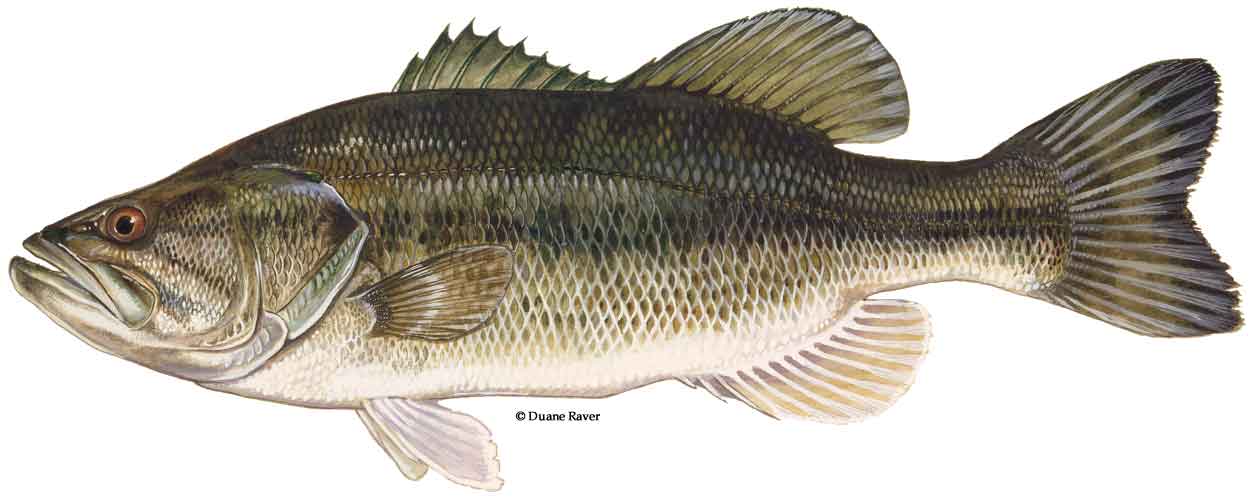
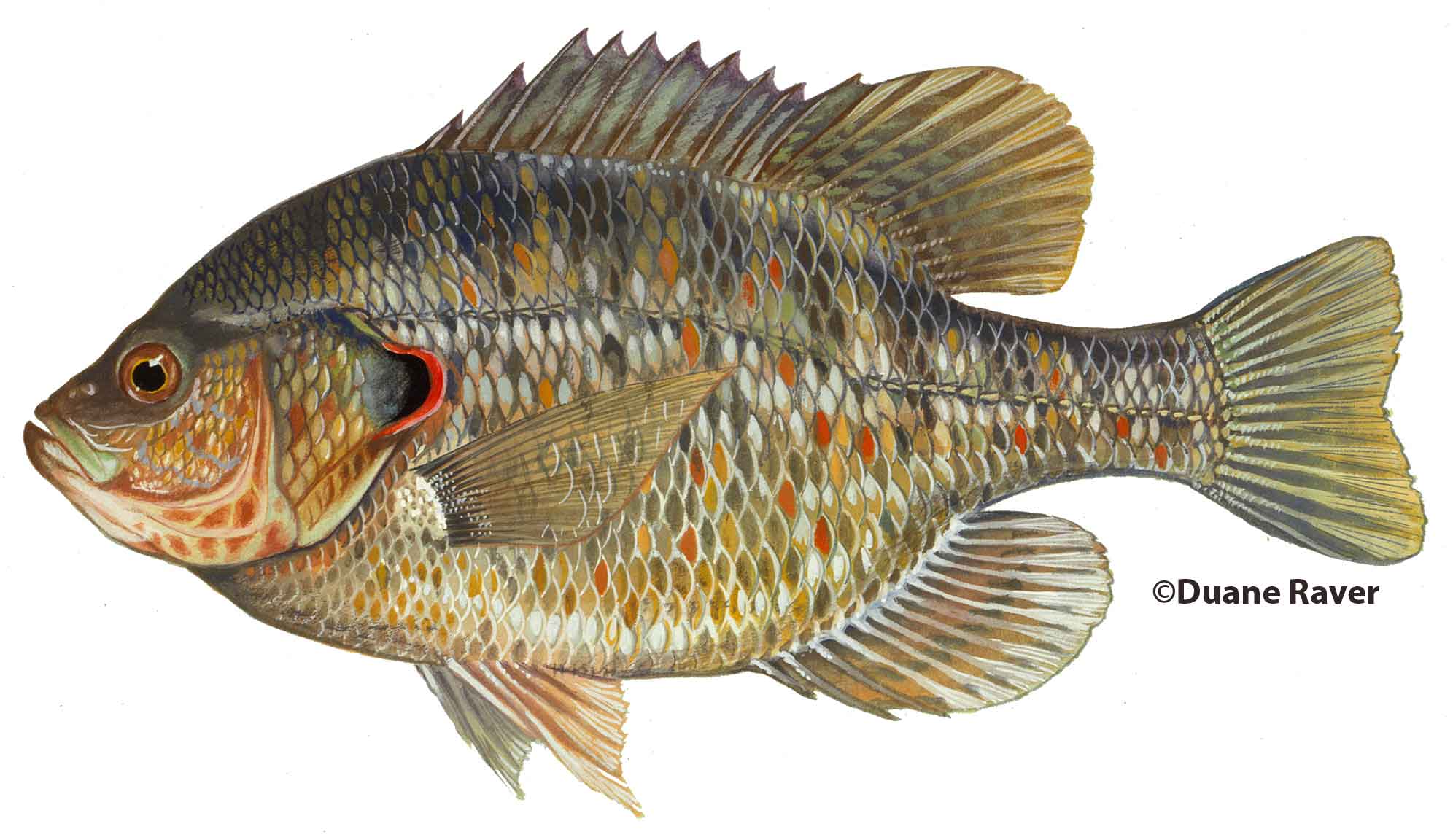

Fish harvest
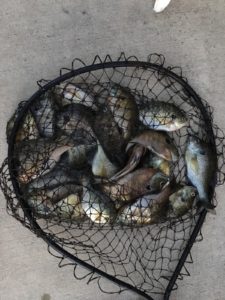 The most effective way to manage fish populations is through harvest. Harvesting certain numbers of fish at specific sizes can help keep fish populations in balance. For example, harvesting both prey (e.g. bluegill) and predators (e.g. bass) can make sure that neither species becomes dominant and minimize the risk of overpopulation. Harvesting “medium-sized” fish can free up space and resources for smaller fish to grow. This some individuals reach large “trophy” sizes. Minimizing harvest of large fish can promote good reproduction as these large fish often produce a high number of eggs and young.
The most effective way to manage fish populations is through harvest. Harvesting certain numbers of fish at specific sizes can help keep fish populations in balance. For example, harvesting both prey (e.g. bluegill) and predators (e.g. bass) can make sure that neither species becomes dominant and minimize the risk of overpopulation. Harvesting “medium-sized” fish can free up space and resources for smaller fish to grow. This some individuals reach large “trophy” sizes. Minimizing harvest of large fish can promote good reproduction as these large fish often produce a high number of eggs and young.
Many fish problems in ponds occur because populations become unbalanced. Unbalanced populations occur due to little-to-no harvest (most common), unbalanced harvest, or too much harvest. Changing your harvest strategy and monitoring fish populations through time can often remedy these problems. Depending on the circumstances, fish populations can respond quite quickly and may become more balanced in only 1-2 years.
Just like fish stocking, fish harvest requires you to have clear goals for your fish population. Different harvest strategies can be used to meet specific goals. For example, you may harvest a different number and differently sized fish for an “all-purpose” pond compared to a “trophy bass” pond. It is important to understand these differences and match the correct harvest strategy to your fish and fishing goals. For more information on fish harvest options, please refer to Purdue Extension Publication FNR-598-W.
Harvest is typically not effective in managing undesirable species. Problem fish need to be removed by either draining a pond or treating a pond with a fish pesticide such as rotenone.
Fish habitat
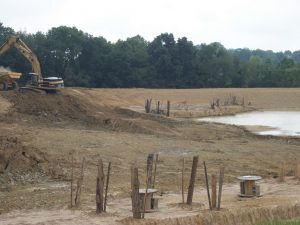 The best fish habitat in a pond is aquatic vegetation. Vegetation provides plankton and insects for food, shelter for small fish and ambush sites for predators. Try to maintain aquatic vegetation in at least 25% of a pond to promote good fish populations.
The best fish habitat in a pond is aquatic vegetation. Vegetation provides plankton and insects for food, shelter for small fish and ambush sites for predators. Try to maintain aquatic vegetation in at least 25% of a pond to promote good fish populations.
Pond owners may wish to add artificial fish habitat to their pond. This can be particularly useful a pond has low levels of vegetation or by adding habitat to promote successful fish spawning. The Indiana Department of Natural Resources has a comprehensive guide for adding artificial fish habitat to private ponds. For more information, visit their website.
Fish kills
Unfortunately, ponds occasionally undergo a fish kill, where many (sometimes all) fish die at the same time. While fish kills can occasionally be caused by a pollutant or chemical, they are most often caused by low dissolved oxygen.
Most fish kills occur during two periods of the year: late summer or late winter. During summer, the water at a pond’s surface becomes warmer and less dense than the bottom water, creating distinct layers (called stratification) in the water column. While shallow and surface waters get renewed with oxygen from plants and waves, deeper waters don’t get renewed and can end up having very low oxygen (hypoxia). This hypoxic layer can increase in size as the summer progresses. In late summer, large storms can cause the entire pond to mix, resulting in relatively low oxygen throughout the pond causing a summer fish kill.

The winter fish kill process is slightly different. As ponds freeze in winter, oxygen exchange stops at the surface. Luckily, sunlight can still penetrate clear ice allowing plants to grow and create oxygen. However, if snow builds up on top of the ice, it can block sunlight causing plants to die. Bacteria then break-down the dead plants, using oxygen in the process, and lowering the dissolved oxygen in the water. If ponds remain frozen and covered with snow for long periods of time, hypoxic water conditions can result in a winter fish kill.

Summer fish kills can be mitigated by installing aerators pumps to agitate the surface and mix water throughout the pond. Winter fish kills can be mitigated by running an aerator to keep part of the pond unfrozen, or by physically removing snow from part of the pond. Care should be taken if working on frozen ponds.

